The information on this page includes signs and symptoms of various eating disorders as established in the fifth edition of the Diagnostic and Statistical Manual of Mental Disorders (DSM-5), as well as admissions information for McCallum Place.
Please note that eating disorders cannot be self-diagnosed. The only way to determine if you or a loved one has developed an eating disorder is to complete a thorough assessment with a qualified healthcare provider.
For additional information, or to schedule an assessment, please contact McCallum Place at (844) 250-8532.
Anorexia Nervosa
- Restriction of energy intake leading to a significantly low body weight in the context of age, sex, developmental trajectory, and physical health
- Intense fear of gaining weight, even though underweight
- Body image disturbance, undue influence of body weight or shape on self-evaluation, or denial of the seriousness of the current low body weight
Bulimia Nervosa
Recurring binge eating episodes characterized by the following:
- Eating large amounts of food within a 2-hour period and sense of lack of control
- Recurring inappropriate compensatory behavior (vomiting, laxatives, exercise, diet pills)
- Binge eating and compensatory behaviors occur, on average, at least once a week for three months
- Self-evaluation is unduly influenced by body shape and weight
Binge Eating Disorder
- Recurring episodes of eating large amounts of food, more than most people would eat in similar circumstances in a short period of time
- Eating rapidly, eating beyond fullness and secret eating marked with distress around binges
- Sense of lack of control over eating during the episode (for example, a felling that one cannot stop eating or control what or how much one is eating)
- Binge episodes average at least once a week for three months
ARFID
- An eating or feeding disturbance so pervasive that the person is unable to meet appropriate nutritional needs, resulting in one (or more) of the following: significant weight loss, nutritional deficiency, dependency on nutritional supplements, or interference in social functioning
- This problem with eating is not explained by a lack of food being available
- This is different from both anorexia nervosa and bulimia nervosa in that the problems with eating are in no way related to what the person believes about his/her size, weight, and/or shape
- This disturbance is not caused by a medical condition or another mental disorder
Other Specified Feeding or Eating Disorder (OSFED)
According to the DSM-5, the category of other specified feeding or eating disorder (OSFED) is applicable to individuals who are experiencing significant distress due to symptoms that are similar to disorders such as anorexia, bulimia, and binge-eating disorder, but who do not meet the full criteria for a diagnosis of one of these disorders.
Examples of experiences that fall within the OSFED category include:
- Atypical anorexia nervosa – The individual meets the criteria for anorexia and has sustained significant weight loss as a result, but they remain within or above the weight range that is considered normal for their height and gender.
- Bulimia nervosa (of low frequency and/or limited duration) – The individual meets the criteria for bulimia, with the exception that they engage in bingeing and compensatory behaviors less than one time per week or for a duration of fewer than three months.
- Binge-eating disorder (of low frequency and/or limited duration) – The individual meets the criteria for BED, except that they average no more than one bingeing episode per week or have been experiencing symptoms for fewer than three months.
- Purging disorder – The individual engages in purging behaviors such as self-induced vomiting or laxative misuse, but they do not experience eating binges.
- Night eating syndrome – The individual experiences recurring episodes of eating after awakening at night, or of eating excessively after their evening meal. These episodes cause significant distress or impaired functioning.
Signs & Symptoms to Look For
- Amenorrhea
- Reflux/regurgitation
- Chronic constipation
- Elevated Creatinine
- Metabolic disturbance
- Lanugo
- Elevated Amylase
- Bradycardia
- Syncope
- Dehydration
- Hypoglycemia
- Acrocyanosis
Preadmission Data
- Labs
- Comprehensive metabolic panel
- CBC
- Amylase
- Magnesium
- Phosphorus
- TSH
- UA
- EKG
- Physical exam including:
- Height
- Weight
- Postural vital signs
- Growth curves
- List of Medications
- Medical History
Psychiatric Concerns
Individuals who develop eating disorders may also be at increased risk for various co-occurring mental health concerns, including anxiety, depression, substance use disorders, obsessive-compulsive disorder (OCD), and posttraumatic stress disorder (PTSD). The risk of suicidal ideation and self-harm may also be greater among individuals who struggle with certain types of eating disorders.
At McCallum Place, we conduct thorough assessments for all clients to identify any co-occurring mental health, behavioral health, or psychiatric concerns. When such concerns are noted, we include appropriate interventions in the client’s personalized treatment plan. This concerted, comprehensive effort ensures that clients are best prepared to make sustained progress toward successful long-term recovery.
Treatment Overview
What We Treat
At McCallum Place, we treat individuals who have developed any eating disorder that is listed in the DSM-5, including:
- Anorexia nervosa
- Bulimia nervosa
- Binge-eating disorder
- Avoidant/restrictive food intake disorder (ARFID)
- Other specified feeding or eating disorder (OSFED)
We also provide personalized care for individuals who have been engaging in compulsive exercise, laxative abuse, and other dangerous weight management practices or compensatory behaviors.
Also, the expertise of our staff and the comprehensive nature of our programming means that we can accept clients at any body weight, as well as those who have complex medical concerns.
Who We Treat
- Individuals of all genders
- Preadolescents
- Adolescents
- Adults
- Athletes
Levels of Care
- Residential
- Partial hospitalization program (PHP)
- Intensive outpatient program (IOP)
- Transitional living
Clinical Outcomes Data
- Significant improvement in eating disorder symptoms, reduced binge eating, purging, restriction, anxiety, depression, and improved mindset upon discharge. Average BMIs greater than 20 upon discharge for clients with Anorexia Nervosa
- Clients maintain significant improvements at one year follow up















